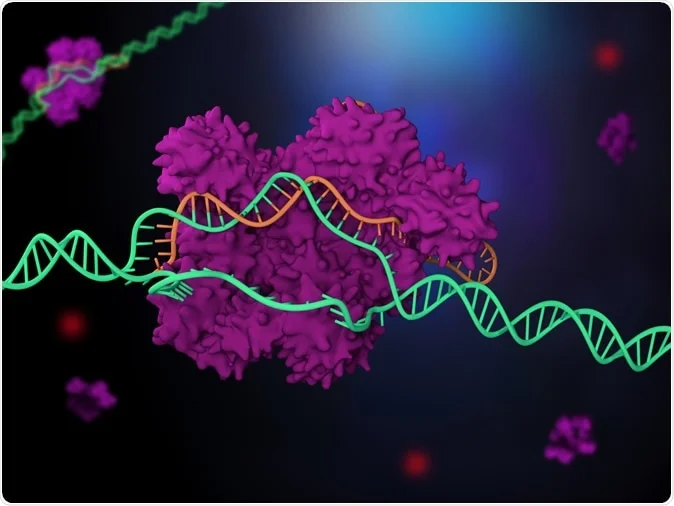Clustered Regularly Interspaced Short Palindromic Repeats (CRISPR) is changing science in ways once thought of as science fiction. Gene editing technology is becoming an everyday application, no longer limited to elite academics in lab coats. CRISPR, the DNA scalpel, could cure life-threatening diseases and transform agriculture. The ease and precision of CRISPR allow scientists to modify genes with extreme precision. The technology is having an impact on medicine, agricultural production, and climate change. With ethical and regulatory approval, the applications of CRISPR have expanded beyond the lab. Let’s take a look at how gene editing is changing multiple fields.
Applications of CRISPR in Modern Medicine
There’s a reason doctors are so excited about CRISPR. Genetic disease treatment is a popular application. Once incurable diseases, such as sickle cell anemia, cystic fibrosis, and muscular dystrophy, are now actively being treated. In some experiments, CRISPR has edited defective genes to correct blood disorders. Another important area of research is cancer treatment. Scientists are using CRISPR technology to improve immunotherapy by modifying T cells to fight malignant tumors. Tests have shown that CRISPR can cut HIV from human DNA. This is revolutionary given the persistence and adaptability of the HIV virus. CRISPR is accelerating the development of personalized medicine, which allows treatments to be tailored to an individual’s genetic code, making healthcare more precise and effective.
CRISPR in Agriculture
CRISPR is quietly revolutionizing agriculture. Farmers are working with scientists to breed more resilient, nutritious, and sustainable crops. CRISPR can edit plant genes to produce drought-resistant corn, disease-resistant wheat, and riper tomatoes. CRISPR can precisely modify a plant’s genome, bypassing the stigma and regulatory barriers of genetically modified organisms. This means that people can enjoy the benefits of genetic engineering without societal opposition. Crossbreeding that used to take years can now be accomplished in a single growing season with CRISPR. CRISPR can improve meat quality, disease resistance, and animal welfare in plants and animals. Pigs are being engineered to be resistant to PRRS, a major threat to pig farms worldwide. This could reduce antibiotic use and improve food safety.
Using CRISPR to Treat Rare Diseases
Thanks to CRISPR, rare diseases with small patient populations are gaining attention. Many of these diseases are monogenic, meaning they are caused by a single defective gene, making them ideal targets for gene editing. One of the most promising cases involves a woman with a rare and serious liver disease, transthyretin amyloidosis. A single CRISPR injection suppressed the expression of the defective gene in her liver, reducing the amount of the disease-causing protein. In this new era of medicine, a single treatment can completely cure a disease. Other rare diseases, including Fabry disease and Leber congenital amaurosis, are currently in clinical trials. These medicines are now available, improving the lives of people who had little hope of a cure.
Environmental Protection CRISPR
CRISPR is booming in the fields of environmental protection, health, and food. Gene drive technology uses CRISPR to rapidly spread traits across a population. This can eliminate invasive species and insects that transmit malaria. Scientists have bred mosquitoes with a genetic defect that prevents them from reproducing, significantly reducing their generation size. This could have a huge impact in areas where malaria is a leading cause of death. CRISPR could also help develop bacteria that can break down plastic, clean up oil spills, and capture carbon dioxide for greater efficiency. These synthetic organisms could help us repair environmental damage and slow climate change. Although CRISPR technology is still in its infancy, it offers new possibilities in conservation that combine biology and environmental engineering.
CRISPR in Personalized Healthcare
The precision and customizability of CRISPR make personalized medicine a reality. No two people are genetically identical, so healthcare should reflect that difference. CRISPR allows doctors to analyze your DNA and tailor treatments to your needs. Imagine getting a drug that matches your body’s blueprint with a single DNA test—no trial and error, fewer side effects, and better outcomes. In cancer treatment, CRISPR is used to create immune cells that fight a patient’s tumor. Pharmacogenomics, the study of how genes influence drug responses, is also benefiting from CRISPR. Your genetic profile could soon determine your drug dosage and treatment plan. This revolution in personalized medicine could increase treatment success rates and reduce the burden on healthcare systems worldwide.
Conclusion
CRISPR is not just a great scientific discovery; it’s also a world-changing one. Gene editing is impacting hospitals, farms, and natural ecosystems around the world. The benefits of precision, speed, and convenience make CRISPR exciting, not just its potential to cure diseases or produce superior crops. The technology is developing rapidly, becoming safer and more effective every day. While ethical and legal issues must be addressed, the potential benefits cannot be ignored. As the technology advances, we must apply CRISPR technology within an ethical framework to benefit humanity and the world. CRISPR is already widely used, and its impact is just beginning.
FAQs
1. What is CRISPR?
CRISPR allows scientists to precisely modify DNA. It cuts and alters gene fragments like molecular scissors.
2. Can CRISPR cure diseases?
Yes, CRISPR is being tested and used to treat genetic diseases such as sickle cell anemia, malignancies, and rare diseases.
3. Is CRISPR safe?
While CRISPR shows promise, there are some safety concerns, including off-target effects and immune reactions. Its long-term safety and effectiveness are being tested in clinical trials.
4. How is CRISPR different from GMOs?
CRISPR can modify genes in an organism’s genome, making it more natural and less controversial than GMOs.
5. Will CRISPR be available to the public soon?
Some drugs that are in clinical trials may be widely available within a few years. Regulatory approval and ethical considerations will determine whether they are used more widely.




